|
Printables |
PowerPoints |
Online exercises |

|
A1 Practise with is, am & are 5
Students read the sentence and complete the sentence with the correct form of the verb to be. They use the (+) or (-) sign at the end of the sentence to see if it needs a positive or negative form of the verb to be. Each form is used 3 times! Answers on page 2.
Level: elementary
Age: 8-100
Type:
Downloads: 136
|
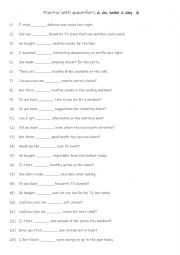
|
A1-A2 Practise with quantifiers a , an , some & any 6
Mastering these basics is essential for both everyday communication and more advanced language use, as these quantifiers are frequently used in real-life scenarios like offering, requesting, or describing items. First, students need to familiarise themselves with 4 quantifiers and check their meaning and use. Then they read the sentences to see whi...
Level: elementary
Age: 7-100
Type:
Downloads: 118
|
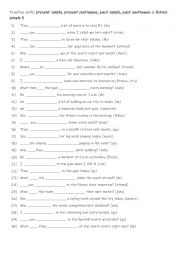
|
A1-A2 Practise with present simple, present continuous, past simple, past continuous & future simple 5
Students need to use present simple, present continuous, past simple, past continuous, and future simple to communicate effectively and express time-related ideas clearly in English. The present simple is used for routines, habits, and facts, while the present continuous describes ongoing or temporary actions. The past simple narrates completed eve...
Level: elementary
Age: 7-100
Type:
Downloads: 116
|
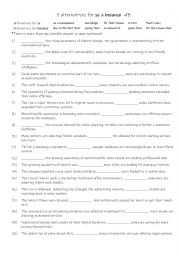
|
5 alternatives for both so & because 4B
First, students need to familiarise themselves with the 10 words and check their meaning and use. Then they read the sentences to see which one is needed to complete the sentence. Each word is used 2 times! Answers on page 2.
Level: elementary
Age: 8-100
Type:
Downloads: 121
|
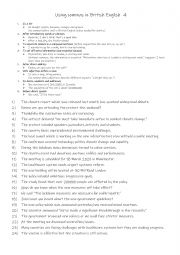
|
Using commas in British English 4
First, students need to familiarise themselves with the 8 reasons why a comma is used. Then they read the sentences and punctuate them accordingly. Answers on page 2.
Level: elementary
Age: 8-100
Type:
Downloads: 121
|
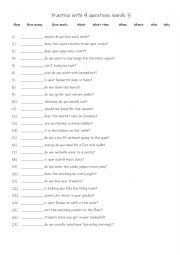
|
Practise with 9 questions words 3
Students familiarise themselves with the 9 question words and their use. Then they read the questions to see which question word is required to complete the questions. Answers on page 2.
Level: elementary
Age: 7-100
Type:
Downloads: 122
|
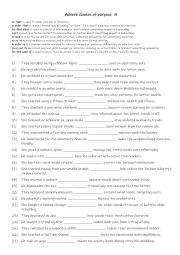
|
A2+-B1 9 adverb clauses of purpose 4
First, students need to familiarise themselves with the 9 adverbs and check their meaning. Then they read the sentences to see which one is needed to complete the sentence. Each word is used 3 times! Answers on page 2.
Level: elementary
Age: 9-100
Type:
Downloads: 121
|
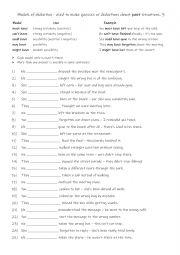
|
Modals of deduction - used to make guesses or deductions about past situations. 3
Students should learn modals of deduction because they are useful for expressing logical guesses or assumptions about past situations, helping speakers show how certain or uncertain they are. These modals, such as must have, might have, could have, and can�t have, make speech sound more natural and fluent, improve communication and reasoning skills...
Level: elementary
Age: 9-100
Type:
Downloads: 119
|
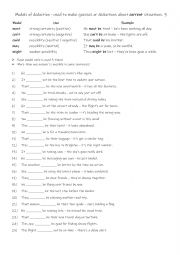
|
Modals of deduction - used to make guesses or deductions about current situations. 3
Students should learn modals of deduction because they are useful for expressing logical guesses or assumptions about present situations, helping speakers show how certain or uncertain they are. These modals, such as must, might, could, and can�t, make speech sound more natural and fluent, improve communication and reasoning skills, and are commonl...
Level: elementary
Age: 8-100
Type:
Downloads: 119
|
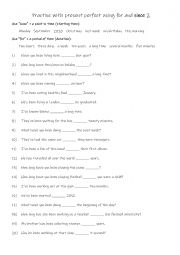
|
A1+-A2 Practise with present perfect using for and since 2
Students read the sentences and complete the sentences with the required word. Answers on page 2.
Level: elementary
Age: 8-100
Type:
Downloads: 116
|
|
|
|
|












